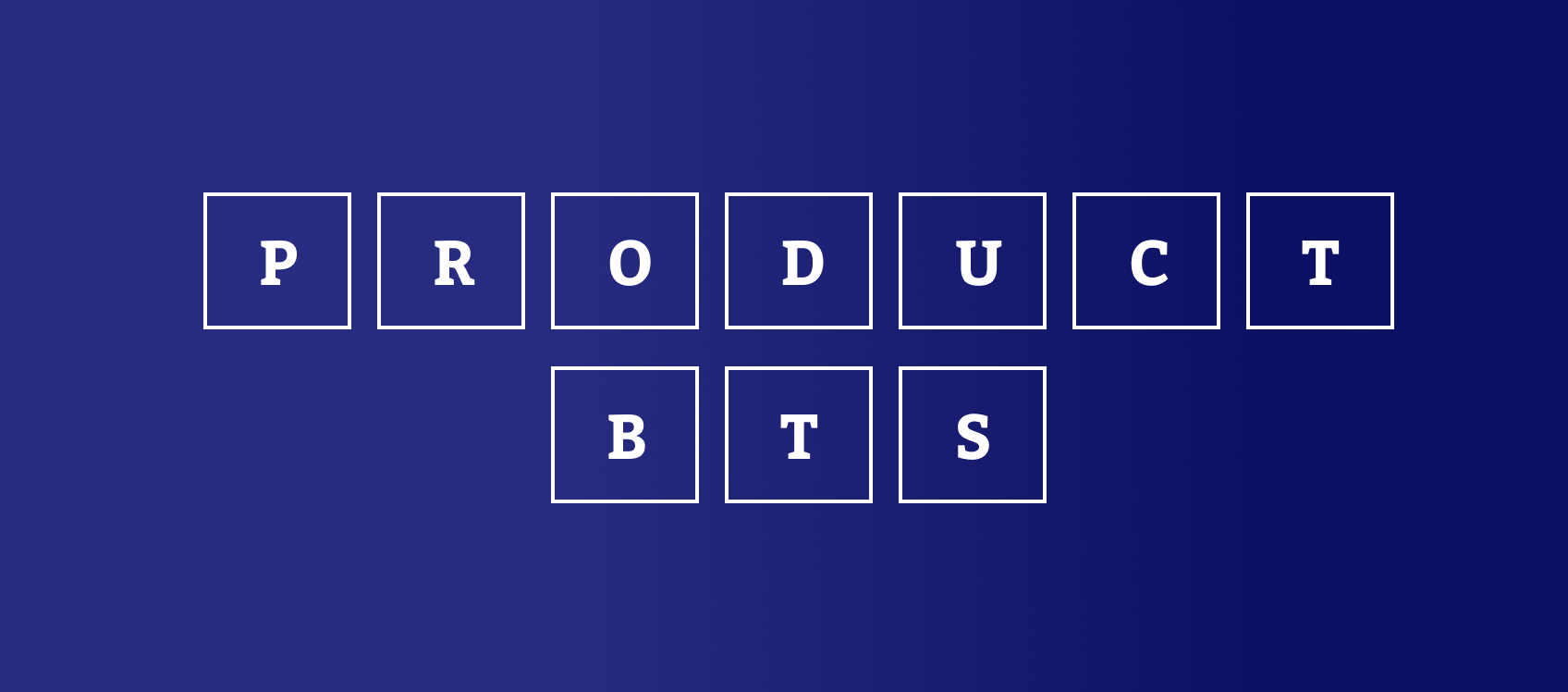We often see the blogs on linkedin or techcrunch about startups turning into unicorns, and it’s always makes me joyful to read those success stories of how they made it happen. But sadly sometimes, those unicorns also die. In this blog, I’’ll cover stories of unicorn deaths and why it happened.
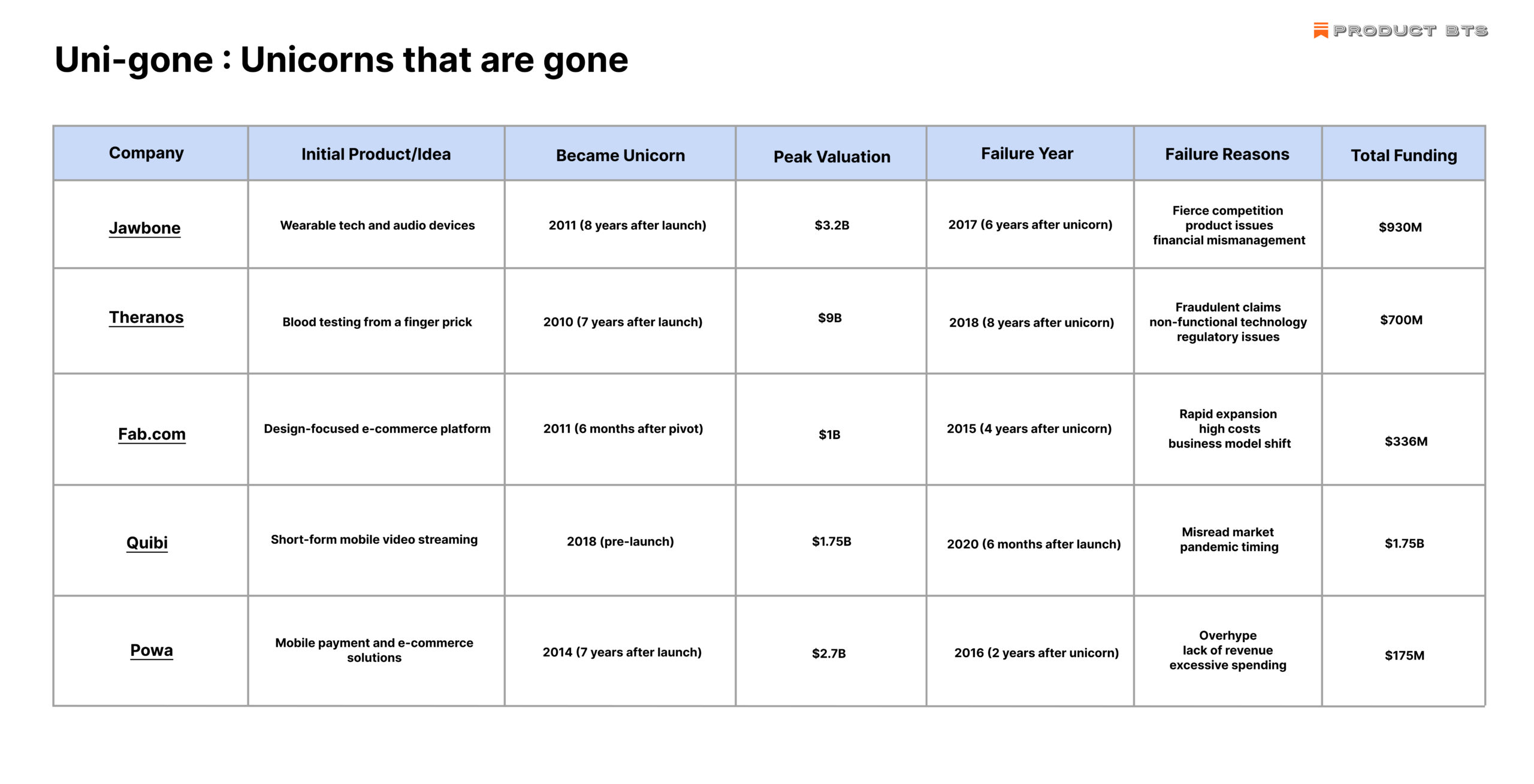
- Jawbone

Jawbone founded in 1999 by Hosain Rahman and Alex Asseily, with a mission to develop noise-cancelling tech. Its how they started and then they were known for for its Bluetooth headsets, portable speakers, and fitness trackers.
Yeah you heard it right. They were using military-grade audio tech for their devices.
Their major success came with Bluetooth headsets, which were well-received for their sleek design and audio quality. Riding this wave, Jawbone expanded into wireless speakers with the Jambox line, which became quite popular.
Fast forward to 2011, and Jawbone wasn’t just about headsets anymore. They took a bold step into the wearable tech world with the UP, one of the first wrist-worn fitness trackers. And by 2014, Jawbone had raised over $900 million in funding from high-profile investors such as Andreessen Horowitz, Sequoia Capital, and JP Morgan, achieving a valuation of $3 billion.
They were riding high, but unfortunately the fairytale doesn’t always have a happy ending. Here’s where things went south for Jawbone. Competition in the fitness tracker market became fierce, with companies like Fitbit offering more features at lower prices. Jawbone also faced some quality control issues with their devices, and legal battles took a toll on their resources. By 2017, just about 3 years after reaching unicorn status, Jawbone quietly shut down
- Theranos
Theranos was a health technology company that claimed to have developed revolutionary blood testing technology. The company, founded by then-19-year-old Elizabeth Holmes in 2003, promised to perform comprehensive blood tests using just a single drop of blood, making the process faster, cheaper, and less painful compared to traditional methods.
The allure was undeniable. Think about it – no more needles, just a quick finger prick for all your bloodwork needs. It was disruptive and every investor wants to jump in. She managed to raise over $700 Million dollars, and in 2014-15, company was valued above $9 Billion dollars. Holmes became a media darling, hailed as the next Steve Jobs in a turtleneck.
It all seemed perfect at first, but then people started noticing things weren’t quite right. Theranos’s secrecy around their technology was a red flag for some. Whistleblowers began to speak out, questioning the accuracy of the tests and hinting that the company might not be delivering on its promises.

Then came the investigation by a journalist from the Wall Street Journal in 2015 (after $9 billion valuation). It exposed that Theranos’s technology was unreliable and often used traditional blood testing methods behind the scenes.
Investors fled, lawsuits piled up, and Theranos’s valuation plummeted to zero. By 2018, Theranos was dissolved, and Elizabeth Holmes and former COO Ramesh “Sunny” Balwani were charged with massive fraud.
- Fab
Fab.com was an online e-commerce platform that focused on selling curated designer products, including home decor, fashion, and accessories. Interestingly it didn’t start as an e-commerce site. Initially, it was a social network for the gay community called Fabulis. So it is an example of a successful pivot and then died.
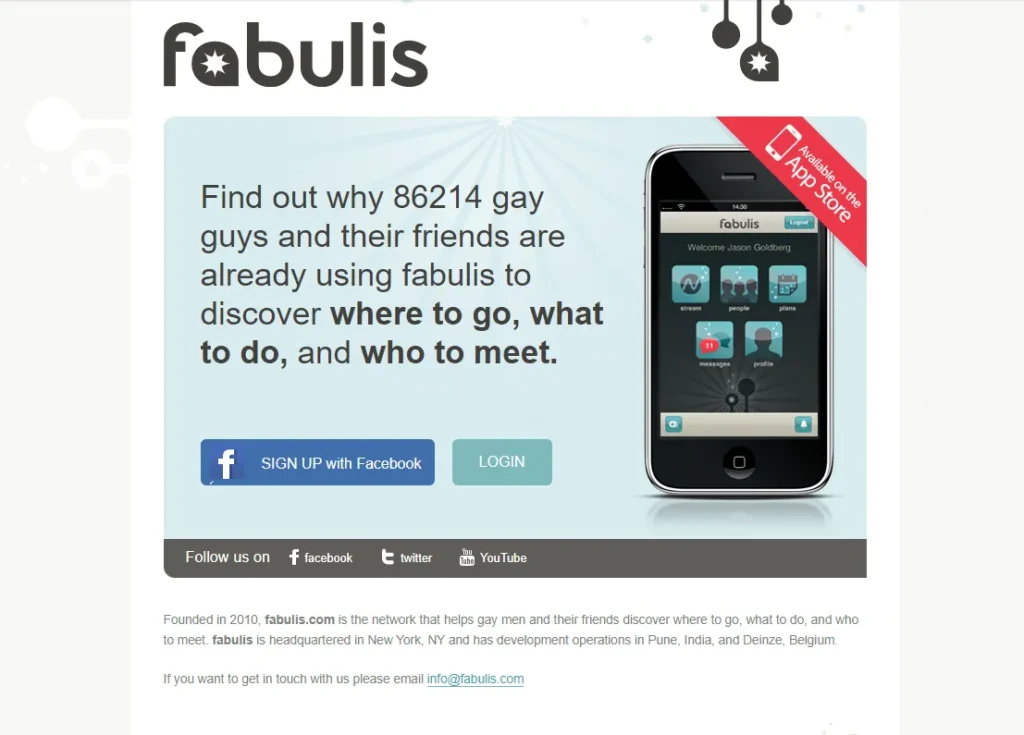
Fab.com was launced in 2011 by Jason Goldberg and Bradford Shellhammer, and it rapidly gained popularity for its unique product offerings and flash sales model.
They grew from 175,000 members at launch to over 10 million members by the end of 2012. It was a combination of social media and shopping, with users sharing their finds and creating a vibrant online community.
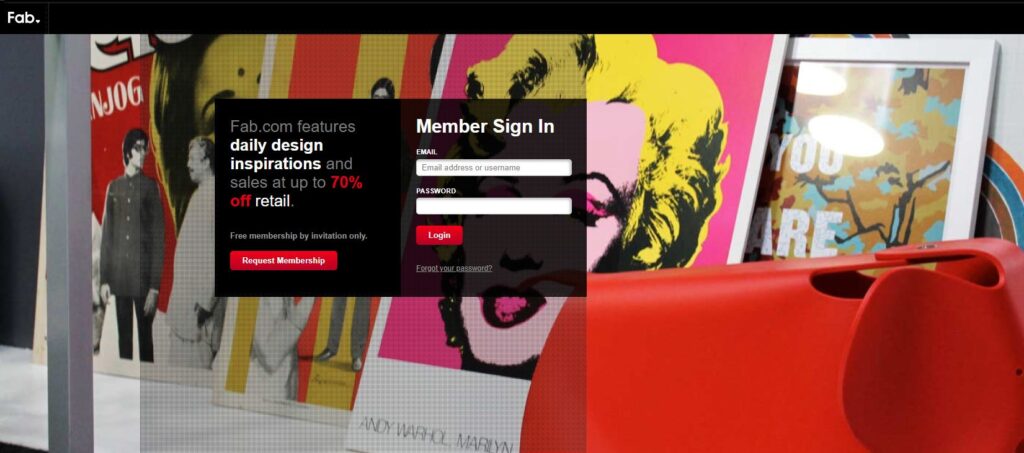
Investors were excited by Fab’s growth. They raised several rounds of funding:
- $8 million in July 2011
- $40 million in December 2011
- $105 million in July 2012
- $150 million in 2013, valuing the company at over $1 billion
With all this funding, Fab expanded rapidly. They acquired several companies and expanded into 29 countries. They also decided to move away from flash sales to a more traditional e-commerce model and started developing their own product line.
We had no business going overseas before we had figured it out at home. Had we instead forced Fab to get profitable in the U.S. before expanding overseas, the rest of the Fab story would have turned out very differently and quite possibly very positively.
— Goldberg
Goldberg tried to save the company but it was already too late. In 2013 (same year when they became unicorn), Fab laid off over 400 employees in multiple rounds. Co-founder Bradford Shellhammer left the company and they closed down operations in several countries.
By 2014, Fab.com’s financial situation was dire. The company laid off a significant portion of its workforce and started winding down operations. In the end, the $1-billion-dollar worth company was sold to PCH Innovations for only $15+ million dollars.
The Fab.com story is often cited as a cautionary tale about the dangers of prioritizing growth over profitability, expanding too quickly, and losing sight of what made a company successful in the first place.
Just wanted to put some words of Goldberg for founders who are quickly expanding and not realizing the impact. So cut smart, cut with a plan.
Everyone always says: “Cut fast and cut deep.” I now disagree. It should rather be: “Cut smart, cut with a plan, and cut with help.
- Quibi
Quibi, short for “Quick Bites,” was founded by Jeffrey Katzenberg (former Disney executive and DreamWorks co-founder) and Meg Whitman (former CEO of eBay and HP). The idea was to create a mobile-first streaming platform for short-form content, with episodes running 10 minutes or less.
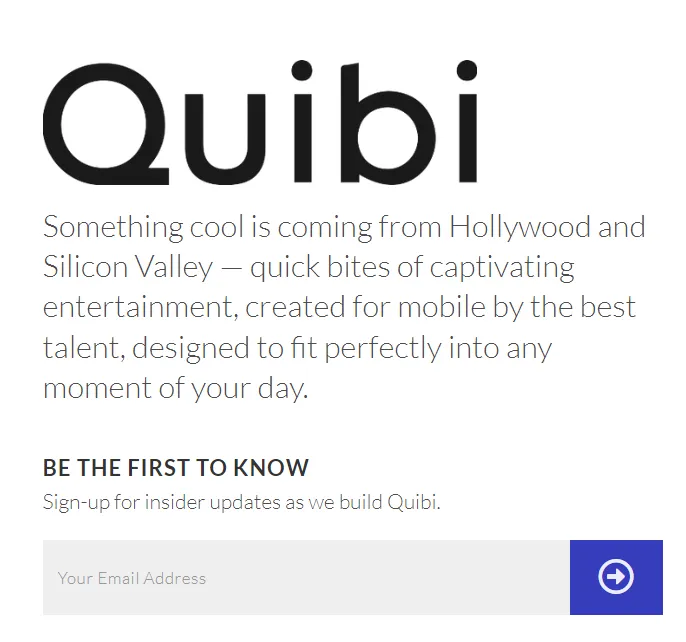
Quibi aimed to revolutionize how people consume content on the go. It was launched in April 2020 with a staggering $1.75 billion in funding (before launch) from major studios and investors, including Disney, NBCUniversal, and WarnerMedia.
Quibi boasted a unique “Turnstyle” technology that allowed seamless switching between portrait and landscape viewing on phones, and this was really new and cool.
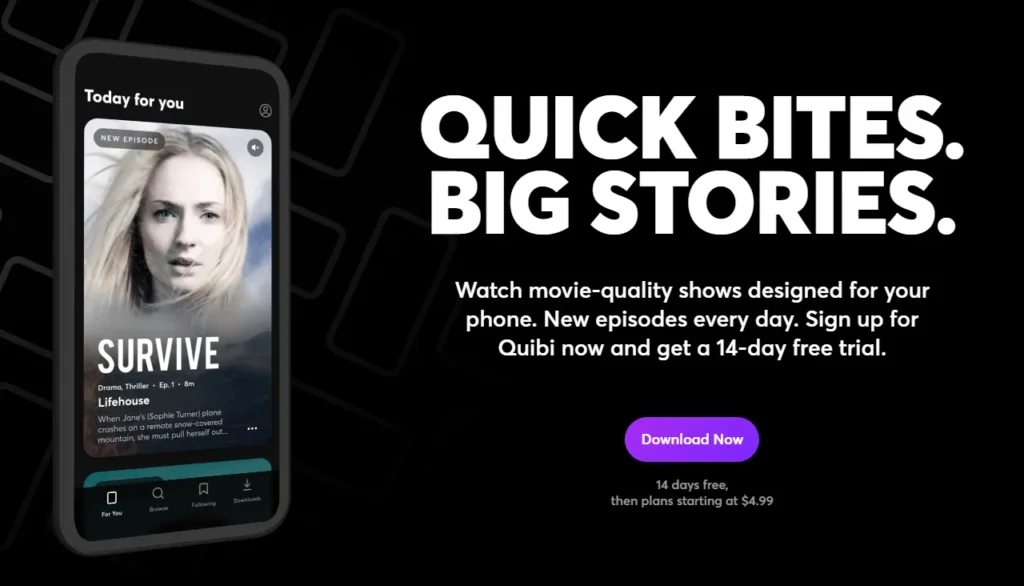
But despite its high-profile launch and substantial investment, Quibi struggled to gain traction in an already crowded streaming market. This was due to major challenges and issues below:
- Timing: Launching a mobile-first platform during a stay-at-home pandemic.
- Competitive Market: Quibi faced intense competition from established streaming giants like Netflix, Disney+, and Hulu, as well as from free, ad-supported platforms.
- Misreading the market: People weren’t as interested in premium short-form content as Quibi believed.
By October 2020, just six months after its launch, Quibi announced that it was shutting down. The company’s founders cited an inability to attract and retain subscribers as the primary reason for the decision.
- Powa Tech
Powa Technologies was founded in 2007 by Dan Wagner, a British entrepreneur. The company aimed to revolutionize the mobile payments and e-commerce industry with three main products:
- PowaTag: A mobile payment app
- PowaPOS: A point-of-sale system for retailers
- PowaWeb: An e-commerce platform
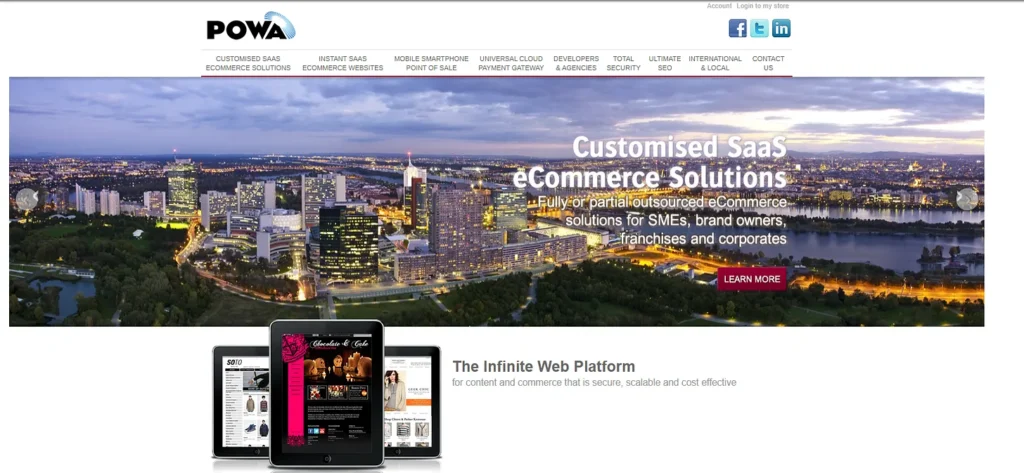
Powa Technologies gained significant attention and investment due to its ambitious and innovative vision of transforming the mobile commerce space.
The company raised around $175 million from investors such as Wellington Management and reached a peak valuation of $2.7 billion in 2014, making it one of the UK’s most highly valued startups at the time.
Despite not having a proven revenue model, Powa spent lavishly. They even rented the top two floors of London’s Heron Tower (one of the tallest buildings in London) for executives. And they also expanded rapidly, opening offices in New York, Spain, France, Italy, and Hong Kong.
Apart from this excessive overspending, PowaTag, the company’s flagship product, failed to gain traction with consumers. And many of the claimed partnerships and contracts were actually just expressions of interest, not firm commitments.
By early 2016, Powa Technologies was in financial trouble. The company entered administration (a UK legal process similar to bankruptcy) in February 2016. Its assets were eventually sold off, and the company ceased operations, marking the end of its journey as a tech unicorn.
